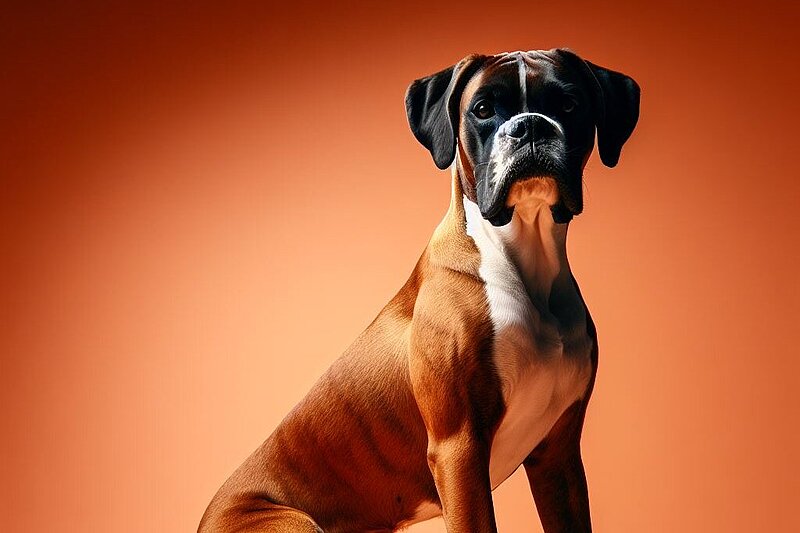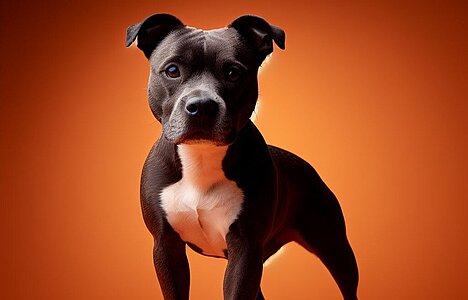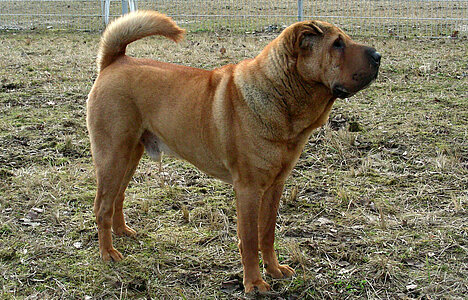The boxer: a brave and loyal friend on four paws
History of the Boxer: From hunting dog to family favorite
The Boxer originated in Germany in the late 19th century. The breed was created by crossing the Brabant Bull Biter, a powerful hunting dog, with English Bulldogs. This combination was intended to produce a versatile dog that was suitable both as a working dog and as a companion. Over time, the Boxer became more and more appreciated as a family dog, although it is still used today as a service and guard dog.
Who is the Boxer suitable for?
The Boxer is ideal for active families and individuals who can invest a lot of time and energy in the care and training of their dog. He needs plenty of exercise and mental stimulation to stay happy and healthy. Due to its friendly and playful nature, the Boxer is particularly well suited to families with children. However, it should be noted that due to its size and energy, it is not necessarily ideal for very young children or older people who may be overwhelmed by its liveliness.
The character of the Boxer: Loyal, playful and intelligent
Boxers are known for their loyal and loving nature. They are intelligent, eager to learn and have a strong bond with their humans. Their playful nature makes them great companions who are always up for a game or a cuddle. Boxers are also very alert and protective of their family, making them excellent watchdogs.
Appearance: A strong and elegant dog
The Boxer has a distinctive look with its square head, strong jaws and short muzzle. Its eyes are large and expressive, and its ears are often semi-erect. The Boxer's body is muscular and athletic, with a strong chest and elegant gait. The coat is short, smooth and close to the body, typically in brindle, fawn or white, often with white markings.
Grooming the Boxer: simple but regular
Grooming a Boxer is relatively uncomplicated. Its short coat only needs occasional brushing to remove loose hair and keep the skin healthy. Regular ear checks and nail trimming are also important. Due to its short muzzle, the Boxer is prone to overheating, so in hot weather it is important to provide plenty of water and shade.
Health: Robust, but susceptible to certain diseases
Boxers are generally robust, but like many purebred dogs, they are prone to certain health problems. These include hip dysplasia, heart problems and certain types of cancer. Regular veterinary examinations and a healthy diet can help to minimize the risk of such diseases.
Size and weight: A medium-sized powerhouse
Boxers are medium-sized dogs, with males reaching a shoulder height of around 57-63 cm and females 53-59 cm. Their weight varies, but averages between 25-32 kg for males and 22-29 kg for females.
Exercise and exercise: energetic and active
Boxers are extremely energetic and need a lot of exercise. Long walks, jogging, playing and dog sports such as agility are ideal to keep them physically and mentally active. Due to their need for exercise, they are more suited to living in the countryside or in a house with a garden, although they can also thrive in the city if they get enough exercise.
Training recommendations: Consistency and love
Boxers are intelligent dogs that love to learn, but they can also be stubborn. Consistent but loving training is therefore important. Positive reinforcement, patience and clear rules help to create a well-behaved and balanced dog. Early socialization is also important to ensure that the Boxer gets along well with other dogs and people.
Grooming tips in detail: more than just coat care
In addition to grooming, it is important to brush the Boxer's teeth regularly to avoid dental problems. The ears should also be checked regularly and kept clean to prevent infections. The claws must be trimmed regularly, especially if the dog walks a lot on soft surfaces.
Behavior and interactions: Family friendly and social
Boxers are known for their friendliness and social behavior. They get along well with children and other pets as long as they are well socialized. Their playful and affectionate nature makes them great family dogs that enjoy participating in all activities.
Recognition by the FCI: Official status
The Boxer is recognized by the Fédération Cynologique Internationale (FCI) and belongs to Group 2, Section 2.1: Molossoid, Mastiff-type dogs.
Interesting facts about the Boxer
An interesting fact about the Boxer is that it probably gets its name from its typical way of playing, where it often uses its front paws as if it were "boxing". This charming and unique way of playing is another reason why Boxers are so popular.
Information
Alternative Names
Country of origin
Appearance
Height at withers
Weight
Life expectancy
Breeding
FCI-Group
Standard
Section
More pictures
Similar to Boxer
These dog breeds look similar to the Boxer or resemble it in character.




